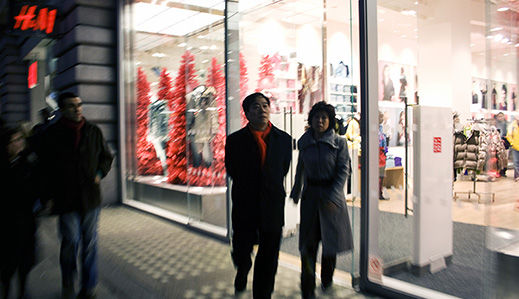
Accused of deliberately destroying unsold winter clothing, including gloves and overcoats, instead of using them to clothe the homeless and poor, two New York City retailers, H&M and Wal-Mart have beat hasty retreats in recent days. Last week, garbage bags filled with shredded clothing were found outside their mid-town Manhattan outlets by a City University of New York graduate student, Cynthia Magnus.* Magnus, after unsuccessful attempts to contact H&M, took her story to the New York Times.
The New York Times also repeatedly attempted to reach Swedish-based H&M, initially, without success.
The high-end retailer has claimed its Manhattan outlet’s clothes shredding incident to be an isolated case, not in keeping with corporate policy. H&M’s website emphasizes gifts of damaged clothes to charity. “In total, more than 500,000 pieces of H&M garments were donated during 2009,” they say.
Wal-Mart, on the lower end of the retail chain offered similar excuses. However, the fact that both companies were caught in the act at the same time in the same city, in fact within blocks of one another, suggests an industry-wide corporate policy might be at work.
A New York Times article stated that “each piece of clothing had holes punched through it by a machine.” A technology exists therefore to destroy unused goods. The destruction of unsold garments rather than being an aberration appears to be a common business practice.
Corporate profit apparently is at the heart of this seeming irrational practice. Fearing damage to image and brand, retailers want the right type of consumer to don their apparel. The Times quotes Ed Foy of eFashionsolutions.com, (Foy is also a board member of the Clothing Bank in New York which provides clothes to the homeless), who says “brands invest billions of dollars in their images, using models and athletes, which makes them cautious about where donated leftovers might end up.” The article continues, “They want us to see that the people wearing their brands are the people we aspire to be.”
Homelessness, not being a common aspiration, the fashion industry is loath to see poor people wearing their goods.
The issue extends beyond H&M and Wal-Mart. Kmart is guilty as well. An Illinois news outlet reports, “Nomenklatura wrote on TeenSpot.com , ‘I work at Kmart, and most Kmarts are supposed to lock their dumpsters. What’s really sad is when we throw away finished goods just because they aren’t selling.'”
In this 14th coldest winter on record, recently publicity has brought an end to this practice at Wal-Mart and H&M’s New York stores. The problem, however, is likely far more widespread. Helping the homeless simply isn’t profitable. That’s capitalism for you.
Photo: http://www.flickr.com/photos/fabiovenni/ / CC BY-SA 2.0
*Wal-Mart’s stock was distributed by another New York store on 35th street: Wal-Mart itself does not have an outlet in NYC.










